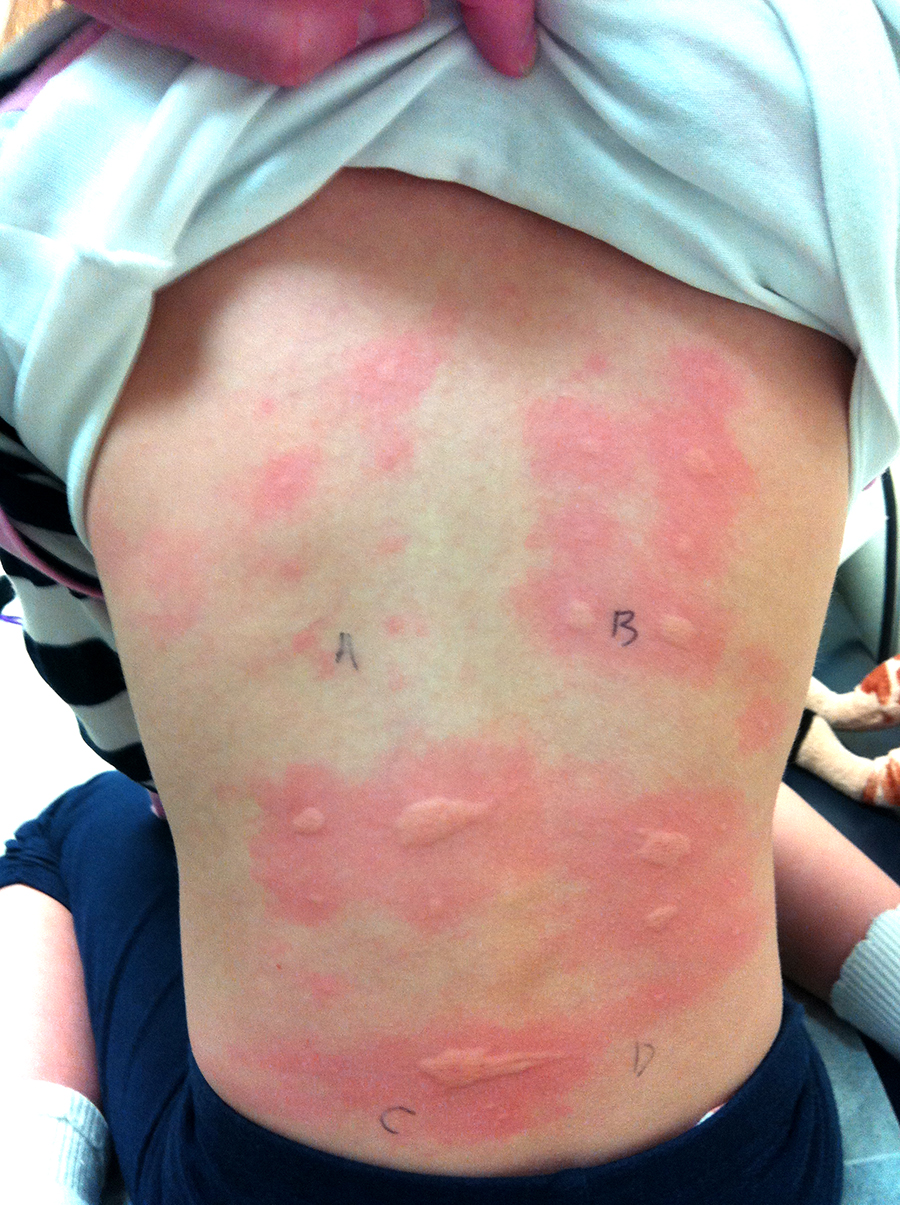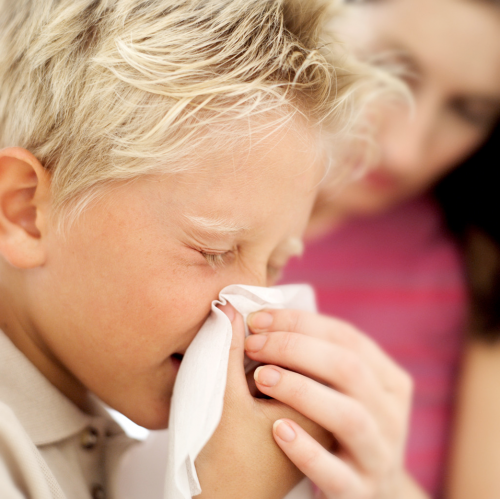Allergy (atopy) in infants, children and adolescents
Atopy (allergies) are inherited. You are born with it!
Well, if that’s the case, then why didn’t it show up at birth? and why don’t all my kids have it? Why does it come and go? and why do allergies change throughout the seasons and the years? and why can you treat it with medicines?
All very good questions! Let’s answer some of them.
The more we do find out about how the body fights off illness the more things we realize that we don’t know.
The immune (disease fighting) system of the body is a phenomenally complex process. It is comprised of many different "pathways" of enzymes which all act on each other and in balance. For example, some draw pus cells into an inflammed area and others stop more from coming. The body truly does a balancing act in order to have "just enough" of a response to fight off an intrusion; but, not too much, which whould cause even more damage.
An infant is born with either the ability to have an allergic response in his body or not, that’s called "atopy"; but, he is NOT born with instructions on WHAT he is allergic to.
Then environmental factors take over. The more allergens (pollens, dust, animals and etc.) they are exposed to, the greater will be their allergic manifestation.
Atopic individuals CAN become allergic to most anything, if given high enough exposure to an allergen for a great enough length of time.
An infant is born with either the ability to have an allergic response in his body, or not… that’s called "atopy."
Just because a child didn’t have allergic symptoms to the cat the first year of his life does not mean that his runny nose, itchy eyes and even wheezing (asthma) is not caused by that very same cat this year.
Allergy symptoms vary. There is spasmodic croup, urticaria (hives), eczema, histamine headaches and hay fever, to mention but a few.
A child tends to "pick his symptoms" and then stick with them for the rest of his life. In other words a child with asthma and hay fever usually does not develop eczema.
You need to know that the treatment of allergies is almost entirely different this year than it was five years ago. There are a large number of new medications and treatments available.
However, the basic treatment of an allergy is fairly similar no matter what manifestations occur.
— First, your physician should be consulted regularly to advise him of any changes or problems. He can then inform you of any recent advances in treatment.
— Second, environmental control is the mainstay of allergy treatment (often neglected in favor of the easier to perform drug treatment.) Basically this means keep the child’s nose, lungs and skin away from whatever triggers the symptoms.
This very basic, logical approach is frequently ignored or overlooked because it is a bit more work!
Although the house in general should be "allergen proofed," the bedroom, at the very least, should become a sanctuary, for the child to retreat into, during allergy "spells".
Environmental Control is the absolute mainstay of allergy treatment, often neglected in favor of the easier drugs.
I have been known to tell parents that the best kind of bedroom for an allergy sufferer is one where there is nothing (not even toys) in the room but a bed, on tile floor which can be hosed down once a day." I say that somewhat tongue-in-cheek, but the closer you can get to that approach the easier it will be to control the pollen and dust load in the child’s bedroom.
Furry animals (and sometimes slippery and feathery) should not ever be allowed in the childs bedroom; or even the house for that matter. If an atopic child isn’t allergic to them now, he will eventually become so after prolonged exposure. Cat dander is the worst and there is almost nothing you can do to rid a house of dander once a cat has been inside for any length of time. It literally takes many, many thorough cleanings before a child allergic to cat dander doesn’t get an "attack" when they come into the room. The dander gets into sofa cushions, carpets, drapes and almost anything that can’t be easily cleaned.
Environmental pollution is also a big factor in a childs symptoms and this begins with parental cigarette smoking. However, it could also include perfumes, paint fumes, garage smells, etc.
— Third, antihistamines and other medications are another mainstay. However, they work better if given to a child before he is exposed to the allergen.
So, if every time he goes to Grandma’s and Grandpa’s farm he has an allergy attack he should take his medicines for eight to twenty-four hours prior to the visit. If you don’t give many of the medicines enough "lead time", so the child can get used to them, they may spend the entire visit sleeping.
Some common characteristics of medicines are: that not every medicine works on every individual – there needs to be some trial to see which is best, better or enough; the benefits of some medicines tend to wear off after several months of constant use – a switch to a different class of medicine is usually helpful. Several new more effective and more convenient medicines come out every year (of course more expensive); and, side effects of any medicine vary with each individual person.
— Fourth, allergy tests and desensitization shots are not indicated for everyone with allergies. They not only are expensive and somewhat painful for a child, but there are many conditions (like food allergies) in which they have no proven value. On the other hand, when other things have failed (like environmental control) they can be a godsend.
 There are some types of blood tests which are very expensive, frequently used by non-allergists because they require no effort to perform, but are often done inappropriately and not clinically useful.
There are some types of blood tests which are very expensive, frequently used by non-allergists because they require no effort to perform, but are often done inappropriately and not clinically useful.
The skin tests are fairly safe, only moderately expensive, better accepted and often clinically helpful.
However, if every time Suzie runs in the weeds she sneezes, gets a runny nose and itchy eyes, you don’t need an expensive skin test to tell you she is allergic to weeds, and probably has hay fever! That’s why a thorough clinical history is extremely important to give your doctor – and for him to spend time taking.
Most physicians use skin testing only when they are considering the possibility of putting the child on long term desensitization shots not "just out of curiosity to see what she’s allergic to."
These shots are used in chronic allergies. They should be continued for three to four years and you usually don’t see any benefit for the first year of the shots.
— Fifth, steroids should definitely ONLY be used very sparingly and cautiously. Although they may occasionally be helpful in asthma, and for short courses in nasal allergies, the "once a summer" steroid shot, popular quite a while ago, is NOT indicated.
This heavy dose of long acting steroid hormone does cut down on allergic manifestations for the short term; but, at the expense of so many undesirable side effects that it should be used only on the rarest of occasions, if at all, and especially not in children and teens.
Advertisement by Google
(sorry, only few pages have ads)

